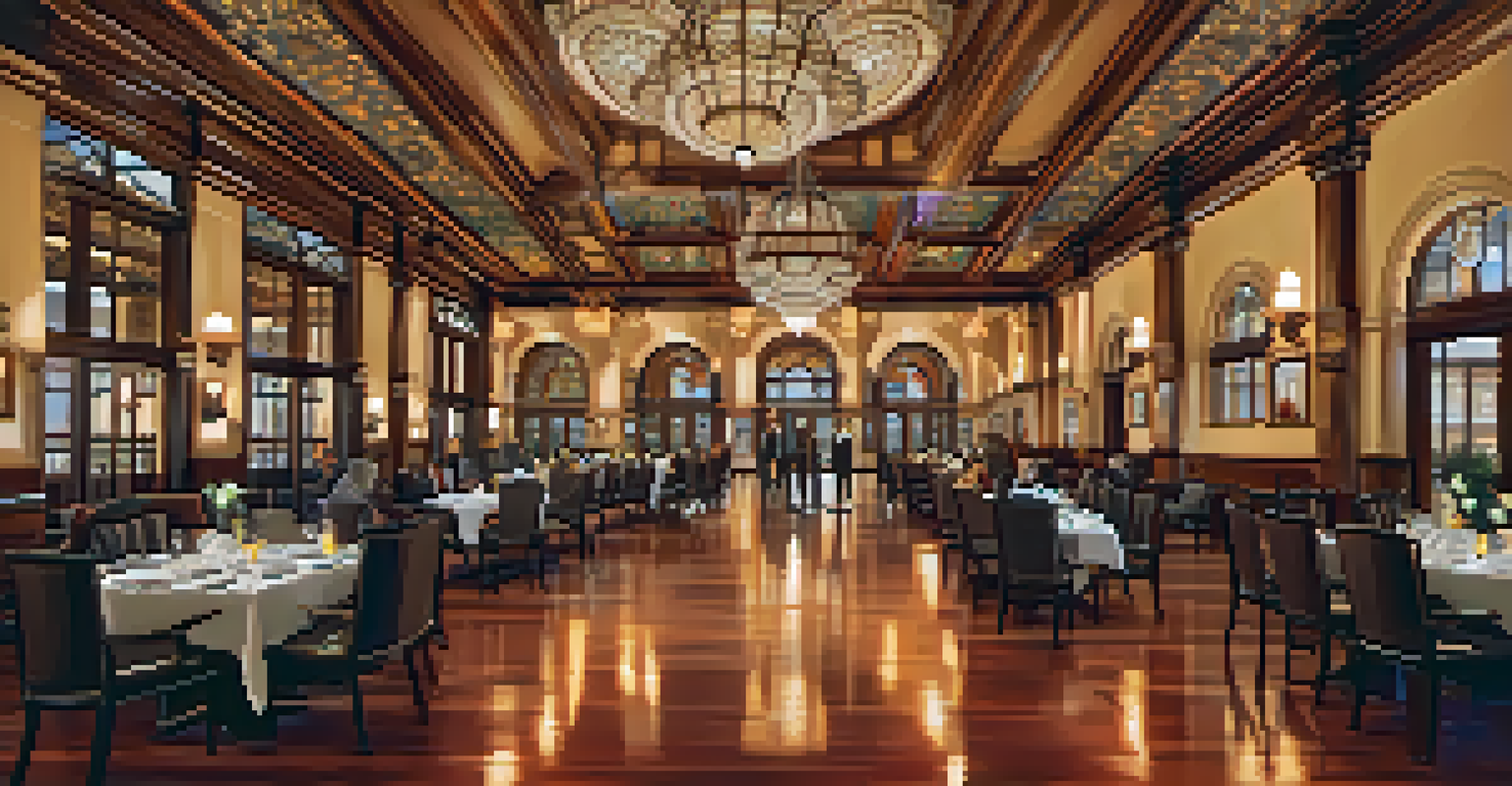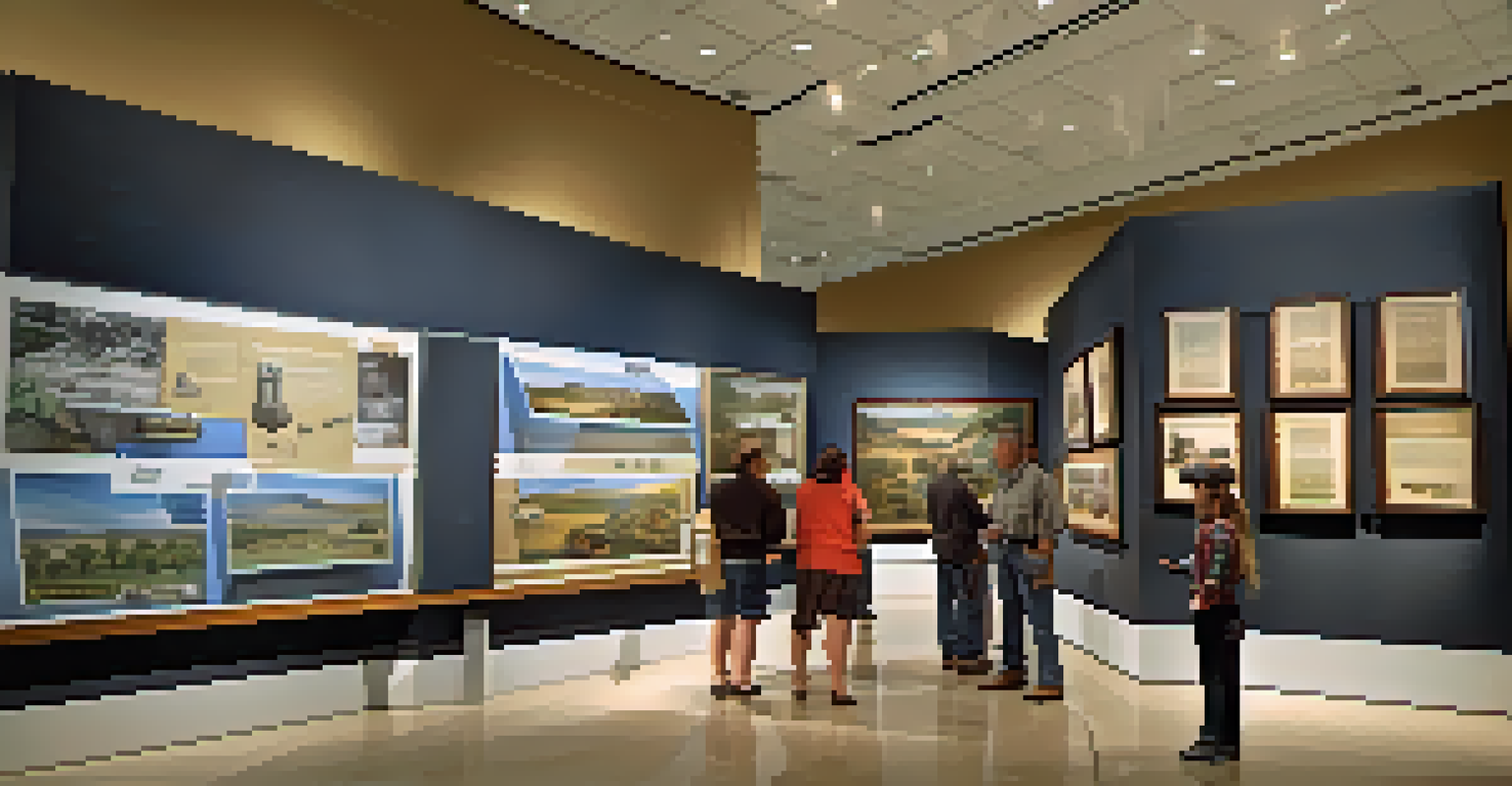Key Historical Sites in Austin Worth Preserving

The Texas State Capitol: A Symbol of Heritage and Democracy
The Texas State Capitol stands tall as a testament to Texas's storied past and democratic values. Completed in 1888, its stunning architecture is a blend of Renaissance Revival and Texas materials, making it a unique landmark. The Capitol not only houses the Texas Legislature but also serves as a museum of state history, drawing visitors from all over.
Preservation of one's own culture does not require contempt or disrespect for other cultures.
Walking through its halls, you can feel the weight of history, with portraits and artifacts that tell the story of Texas's independence and governance. The expansive grounds are perfect for a leisurely stroll, and the iconic dome is a sight to behold, especially when illuminated at night. It's clear that preserving this site is essential for future generations to appreciate Texas's rich heritage.
Moreover, the Capitol's ongoing restoration efforts ensure that its grandeur is maintained. As Austin continues to grow, the Capitol remains a steadfast reminder of the state's identity and values. In a rapidly changing world, holding on to such a significant site is crucial to understanding where we came from.
The Driskill Hotel: A Glimpse into Austin's Gilded Age
Opened in 1886, the Driskill Hotel is not just a place to stay; it's a historic landmark that encapsulates Austin's Gilded Age charm. This elegantly designed hotel has hosted countless dignitaries and celebrities, making it a key player in the city’s social fabric. With its stunning architecture and rich history, it serves as a portal to the past.

Visitors can marvel at the intricate stained glass and ornate furnishings while enjoying a meal in the hotel’s renowned restaurant. Stories of ghostly encounters and tales from its storied past add an element of intrigue, making it a beloved spot for both locals and tourists. Preserving the Driskill is vital not only for its architectural beauty but also for its role in Austin's cultural narrative.
Preserving Heritage is Essential
Maintaining historical sites in Austin is vital for connecting future generations to their roots and understanding the city's diverse cultural evolution.
As the city evolves, the Driskill Hotel stands as a reminder of the elegance and grandeur of a bygone era. Its preservation allows future generations to experience a slice of history that contributes to Austin's unique identity. After all, maintaining such landmarks fosters a sense of belonging and understanding of our roots.
The Bullock Texas State History Museum: A Journey Through Time
The Bullock Texas State History Museum offers a captivating exploration of Texas's diverse history. Opened in 2001, it features interactive exhibits and a vast collection of artifacts that tell the story of the Lone Star State from its early days to modern times. This museum is a treasure trove of knowledge for those looking to understand Texas's complex past.
History is not a burden on the memory but an illumination of the soul.
From the stories of Native American tribes to the impact of the oil boom, the museum showcases the events that shaped Texas's identity. Special exhibits and IMAX films make learning engaging and fun, appealing to all ages. Preserving this site ensures that future generations can continue to explore and learn about the rich tapestry of Texas history.
Additionally, the museum hosts various educational programs and events, making it a vital part of the community. By maintaining the Bullock Museum, we support the importance of history in shaping our future. It serves as a reminder that understanding our past is key to navigating our present and future.
The LBJ Presidential Library: Honoring a Texas Legacy
The LBJ Presidential Library is more than just a repository of documents; it’s a tribute to the life and presidency of Lyndon B. Johnson. Located on the University of Texas campus, the library offers insights into the significant events of the 1960s, including civil rights and the Vietnam War. It’s a crucial site for understanding both local and national history.
Visitors can explore exhibits that highlight Johnson's efforts to promote social change and progress, making it an important educational resource. The library also hosts lectures and events that encourage dialogue about current issues, fostering a connection between past and present. Preserving this library is essential for honoring the legacy of a president who shaped modern America.
Cultural Sites Boost Local Economy
Historical landmarks attract tourism and foster community pride, enriching the local economy and fabric of Austin.
As time goes on, the lessons learned from Johnson's presidency remain relevant. By maintaining the LBJ Library, we ensure that his contributions to society are not forgotten. This site serves as a powerful reminder of our responsibility to learn from history as we move forward.
The Historic Sixth Street: A Cultural Epicenter
Sixth Street is not just a street; it’s a vibrant cultural hub that reflects Austin's unique character. Known for its live music scene and eclectic nightlife, this area has been a gathering place for artists, musicians, and locals for decades. Preserving Sixth Street is vital to maintaining the city's cultural identity and spirit.
With its historic buildings and lively atmosphere, Sixth Street captures the essence of Austin’s creative energy. The street has witnessed countless performances, festivals, and gatherings, making it a living testament to the city’s love for arts and entertainment. Keeping this area vibrant ensures that future generations can experience the same excitement and inspiration.
Additionally, the ongoing preservation efforts aim to balance modernization with historical integrity. By protecting Sixth Street's charm, we nurture a sense of community while celebrating the artistic expression that defines Austin. After all, a city thrives when its culture and history are celebrated and preserved.
The French Legation Museum: A Hidden Historical Gem
Tucked away in the heart of Austin, the French Legation Museum offers a glimpse into the city’s early history. Built in 1841, this charming house served as the residence for the French ambassador during the Republic of Texas. It stands as a symbol of the international relations that shaped Texas's early days and is a must-visit for history enthusiasts.
Visitors can take guided tours to learn about the unique architecture and the stories of those who lived there. The museum’s gardens are also a peaceful retreat, showcasing the beauty of the era. Preserving this site is essential for understanding the multicultural influences that have shaped Austin over the years.
Significance of Community Engagement
Collaborative efforts between local communities and preservation agencies help safeguard important sites and promote awareness of Texas's rich history.
As Austin continues to grow, the French Legation Museum reminds us of the city's rich and diverse heritage. By protecting this gem, we ensure that future generations can appreciate the stories of early settlers and the international connections that have contributed to Texas’s identity. It's a small yet significant piece of history worth preserving.
The Texas Historical Commission: Guardians of Our Heritage
The Texas Historical Commission plays a crucial role in the preservation of historic sites across the state, including Austin. This agency is dedicated to safeguarding Texas’s heritage through various initiatives, including grants, education, and advocacy. Their efforts ensure that vital historical landmarks are protected for future generations to explore.
Through partnerships with local communities, the commission works to identify and preserve sites that hold significant cultural and historical value. Their programs foster awareness and appreciation for Texas's rich history, encouraging locals and visitors alike to engage with these treasures. Supporting the commission's work is essential for maintaining the integrity of sites that tell our shared stories.

As Austin evolves, the Texas Historical Commission remains committed to preserving its unique heritage. By advocating for historical preservation, they help maintain the character and identity of the city. Protecting our past not only enriches our present but also helps guide us into a future that honors our history.
The Importance of Preserving Austin's Historical Sites
Preserving historical sites in Austin is crucial for maintaining the city’s unique identity and heritage. These sites serve as windows into the past, providing valuable lessons and insights into the cultural evolution of the area. As Austin continues to grow, the importance of safeguarding these landmarks becomes even more apparent.
Each site holds stories that connect us to our roots and foster a sense of community. By preserving these locations, we ensure that future generations can learn about their history and appreciate the diverse influences that have shaped the city. It’s about creating a shared narrative that honors those who came before us.
Moreover, historical sites contribute to the local economy by attracting tourism and fostering community pride. They serve as gathering places for events, celebrations, and education, enriching the fabric of Austin. In essence, preserving these sites is not just about maintaining buildings; it’s about nurturing a culture that values its history and legacy.